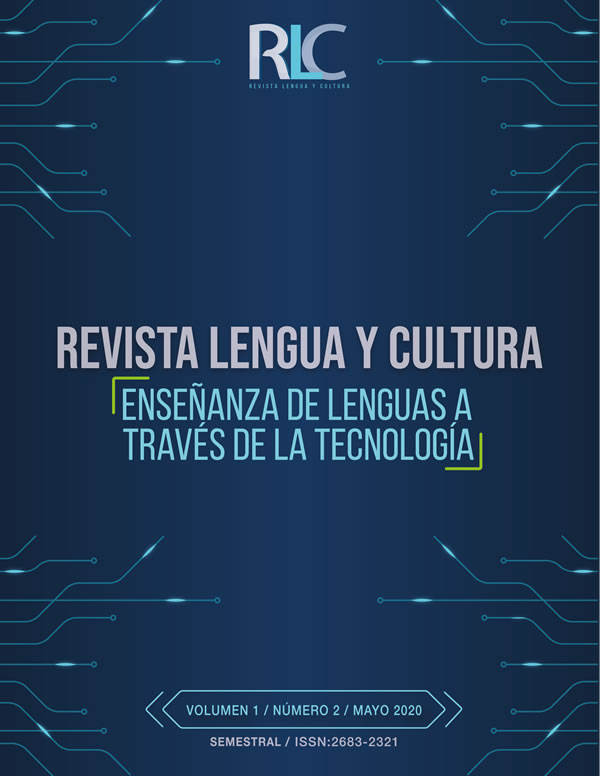L’Hybridation: une étude sur l’apprentissage de langues étrangères
DOI:
https://doi.org/10.29057/lc.v1i2.5429Palabras clave:
Langues étrangères, simultanéité, transfert linguistique, action discursive, écriture, hybridationResumen
This article is the partial result of an investigation carried out with the students of the Degree Program in Modern Languages of the University of Caldas, Colombia. This research was likewise integrated into a second study concerning the Didactics of the Grammar of Foreign Languages. The research arose from the linguistic hybridization that language teachers have perceived in the correction of the written production of students who simultaneously learn several languages. We analyze, in the current investigation, the phenomenon of linguistic transfer through a corpus of authentic texts written by students. This research focuses on two primary objectives: to identify the phenomenon of transfer at the scriptural level and to determine the pedagogical implications of the language loan in the simultaneous learning of several foreign languages. The methodology is based on an analytical-descriptive approach whose instruments for collecting information were an interview, a survey and a corpus of 50 authentic texts produced by the students. We made a description of the discursive unit and then we carried out a morphosyntactic, semantic and pragmatic analysis of each text. The systematization of the information gathered threw us among the conclusions that the mixture of languages in written production is essentially due to the similarity between them, that is, due to their nature of related languages and the approach used for teaching foreign languages, it facilitates the transfer phenomenon when the learning of several linguistic codes occurs simultaneously.
Descargas
Información de Publicación
Perfiles de revisores N/D
Declaraciones del autor
- Sociedad académica
- N/D
- Editora:
- Universidad Autónoma del Estado de Hidalgo
Citas
Alcaraz Varo, E. & Martínez Linares, M.A. (2004). Diccionario de linguistica moderna. Barcelona : Ariel.
Caddéo, S. & Jamet, M.C. (2013). L’intercompréhension : une autre approche pour l’enseignement des langues. Paris : Hachette Livre.
Deeds Ermarth, E. (2000). Beyond “The Subject” Individuality in the Discursive Condition. New Literary History. Vol 31. N° 3, Philosophical and Rhetorical Inquiries, pp. 405-419.
Dubois, J. et al. (2012). Le Dictionnaire de linguistique et des Sciences du Langage. Paris : Larousse.
Goossens, V. (2015). Les noms d’affect parmi les noms abstraits intensifs : nouvelles perspectives typologiques. Langues Française. N° 185, Les types nominaux, pp. 59-72.
Hernández Sampieri, R. et. al. (2006). Metodología de la investigación. 4ª ed. México: McGraw Hill.
Heredia, R. & Altarriba, J. (2001). Bilingual Language Mixing: Why do Bilinguals code-switch? Current Directions in Psychological Science. Vol. 10 (N° 5), pp 164-168.
Marquilló Larruy, M. & Matthey, M. (2008). “Discours ordinaires. Représentations des contacts dans l’apprentissage chez les enseignants et les apprenants », In : G. Zarate, D. Lévy et C. Kramsch (dirs), Précis du plurilinguisme et du pluriculturalisme, Paris : éditions des archives contemporaines, pp. 307-311
Rastier, F. (2008). Doxa et Sémantique du corps. Langages. N° 170. Discours et sens commun, pp. 54-68.
Simeoni, D. (2014). De quelques usages du concept de transfert dans la réflexion sur la traduction. En : Gin, P., Goyer, N. & Moser, W. Transfert, Exploration d’un champ conceptuel. (pp.103-117). Ottawa : Les Presses de l’Université d’Ottawa.
Yli-Vakkuri, J. (2013). Propositions and Compositionality. Philosophical Perspectives. Vol 27, Philosophy of Language, pp. 526-563.




















